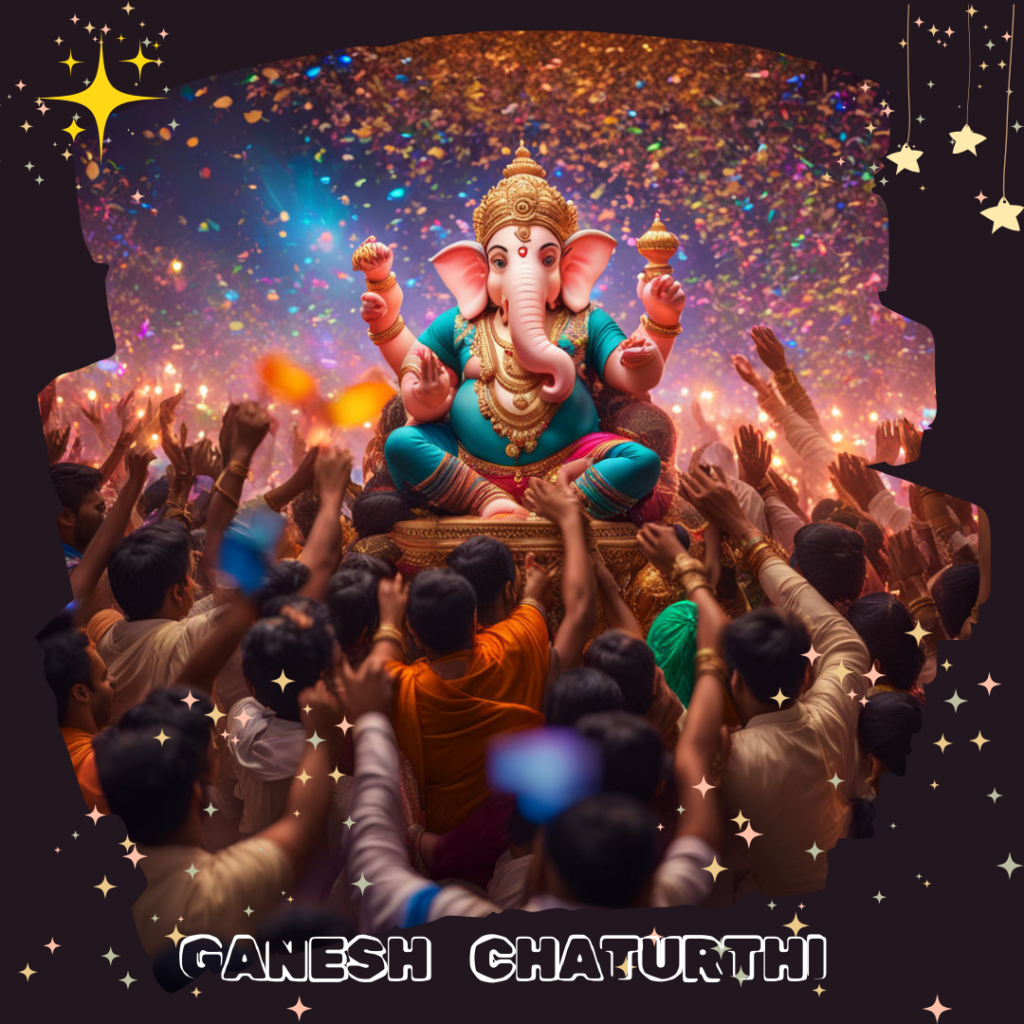
This year, the sacred festival of Ganesh Chaturthi will begin on September 7, 2024. According to the Hindu calendar, the Chaturthi Tithi of the Shukla Paksha in the month of Bhadrapada will start on September 6, 2024, at 3:01 PM and will end on September 7 at 5:37 PM. Anant Chaturdashi will be celebrated on September 17, 2024. It is on this day that the Ganpati Visarjan will take place.
We install the Ganesh idol at our home with devotion, keeping it for the first 10 days of the festival. On the 10th day, we come together with our society, joining the collective celebration as we perform the Visarjan, immersing the idol with the community’s idols in a shared act of reverence and unity.
We follow one principle each day for 10 days
- Wisdom and Knowledge: Ganesha teaches us the importance of wisdom and knowledge in overcoming obstacles in life.
- Humility: Despite his immense power, Ganesha is known for his humility, reminding us to stay grounded.
- Perseverance: Ganesha’s elephant head symbolizes strength and determination, encouraging us to persist in the face of challenges.
- Adaptability: Ganesha’s unique form shows us the value of adapting to circumstances with grace and confidence.
- Compassion: Ganesha is often called the god of compassion, teaching us to be kind and understanding towards others.
- Patience: The large ears of Ganesha symbolize the importance of listening patiently and considering all viewpoints before acting.
- Contentment: Ganesha’s rounded belly symbolizes contentment and the ability to accept life’s joys and challenges.
- Unity: Ganesha is often worshipped in group settings, emphasizing the importance of community and unity.
- Faith: His association with new beginnings encourages us to maintain faith in divine timing and our own abilities.
- Balance: Ganesha teaches us to balance our spiritual and material lives, striving for harmony in all aspects of life.
According to Hindu mythology, Ganesha was created by Goddess Parvati from clay and brought to life. He was set to guard her while she bathed. When Lord Shiva, her consort, attempted to enter, Ganesha, unaware of his identity, stopped him. Angered, Shiva beheaded him, but later revived him by placing an elephant’s head on his body after Parvati’s plea. Thus, Lord Ganesha came to be worshipped as the remover of obstacles and the god of beginnings.
The Ganesh Festival, our favorite and is one of the most popular and widely celebrated festivals in India, particularly in Maharashtra. The public celebration of Ganesh Chaturthi in its modern form was revived by Lokmanya Bal Gangadhar Tilak, a freedom fighter, in 1893. During the British rule in India, large public gatherings were restricted. Tilak transformed Ganesh Chaturthi into a community celebration to promote unity and gather support for the freedom struggle. Since then, the festival has grown in popularity, with large-scale public celebrations across India.

Installing a Ganesh idol at home involves several rituals that carry deep significance. The process starts with preparation and culminates in the immersion (Visarjan) of the idol.
Clean the Home: Before the installation, ensure that your home, especially the area where the idol will be placed, is cleaned thoroughly. This symbolizes the removal of obstacles and the preparation to welcome the divine.
Create a Sacred Space: Set up a small mandap (platform) decorated with flowers, lights, and other festive items. This will be the place where the idol is installed.
Offerings: Place offerings such as sweets (especially Modak, Ganesha’s favorite), fruits, flowers, coconut, and Durva grass before the idol.Aarti: Perform aarti (a ritual of worship) with a lit lamp or incense sticks while singing traditional aarti songs. This is done twice daily, in the morning and evening.
Morning & Evening Prayers: Continue with the daily prayers, offerings, and aarti for the duration that the idol remains in your home. Keep the surroundings of the idol clean and vibrant with fresh flowers and decorations.
Modak Prasadam: Modaks (sweet dumplings) are prepared and offered as prasadam (blessed food) during the festival, as it is believed to be Lord Ganesha’s favorite.
- Duration: The idol can be kept for 1.5, 3, 5, 7, or 10 days, depending on tradition and personal preference. On the day of Visarjan, the idol is taken for immersion, symbolizing Lord Ganesha’s return to his celestial abode.
- Final Aarti: Before immersion, perform the final aarti and thank Lord Ganesha for his blessings and protection.
- Immersion Process: The idol is immersed in a body of water, such as a river, lake, or the sea. Eco-friendly practices are encouraged to minimize environmental impact. Many devotees now opt for smaller idols and perform the immersion in artificial water tanks to reduce pollution.
- Chants and Prayers: While carrying the idol for immersion, devotees chant “Ganpati Bappa Morya, Pudhchya Varshi Lavkar Ya” (O Lord Ganesha, come again early next year), expressing their devotion and looking forward to his return.
By following these rituals with devotion, faith, and joy, the Ganesh Festival becomes a powerful means of invoking the divine and strengthening family and community bonds.
Hi, this is a comment.
To get started with moderating, editing, and deleting comments, please visit the Comments screen in the dashboard.
Commenter avatars come from Gravatar.